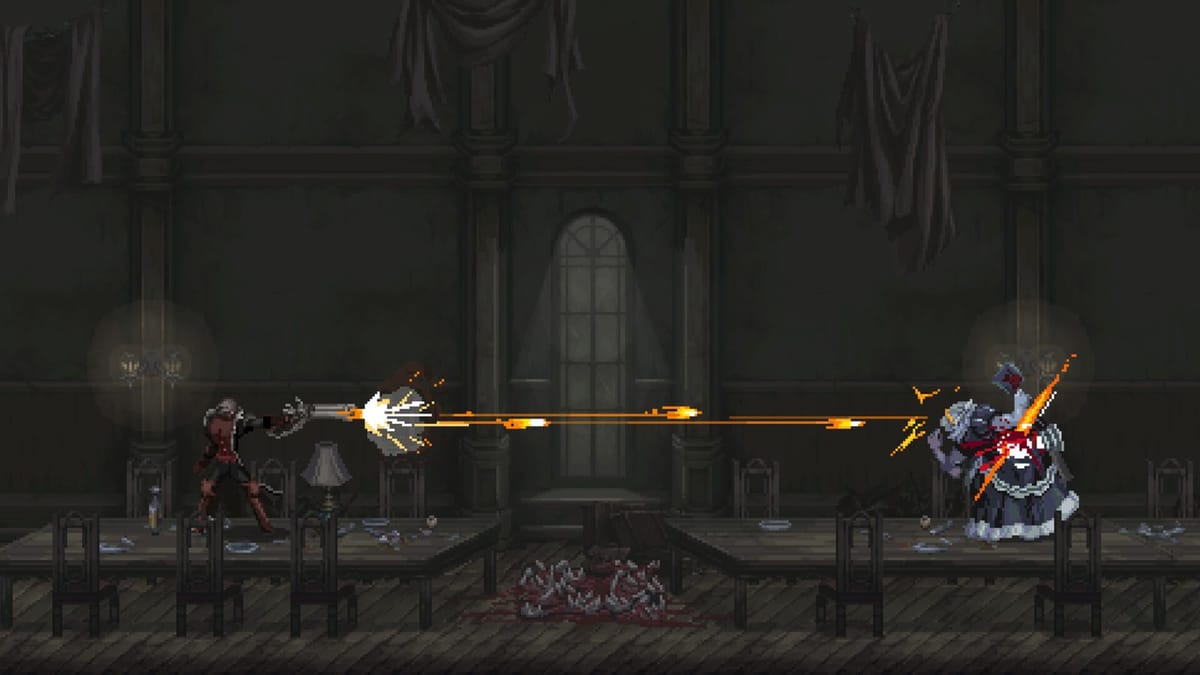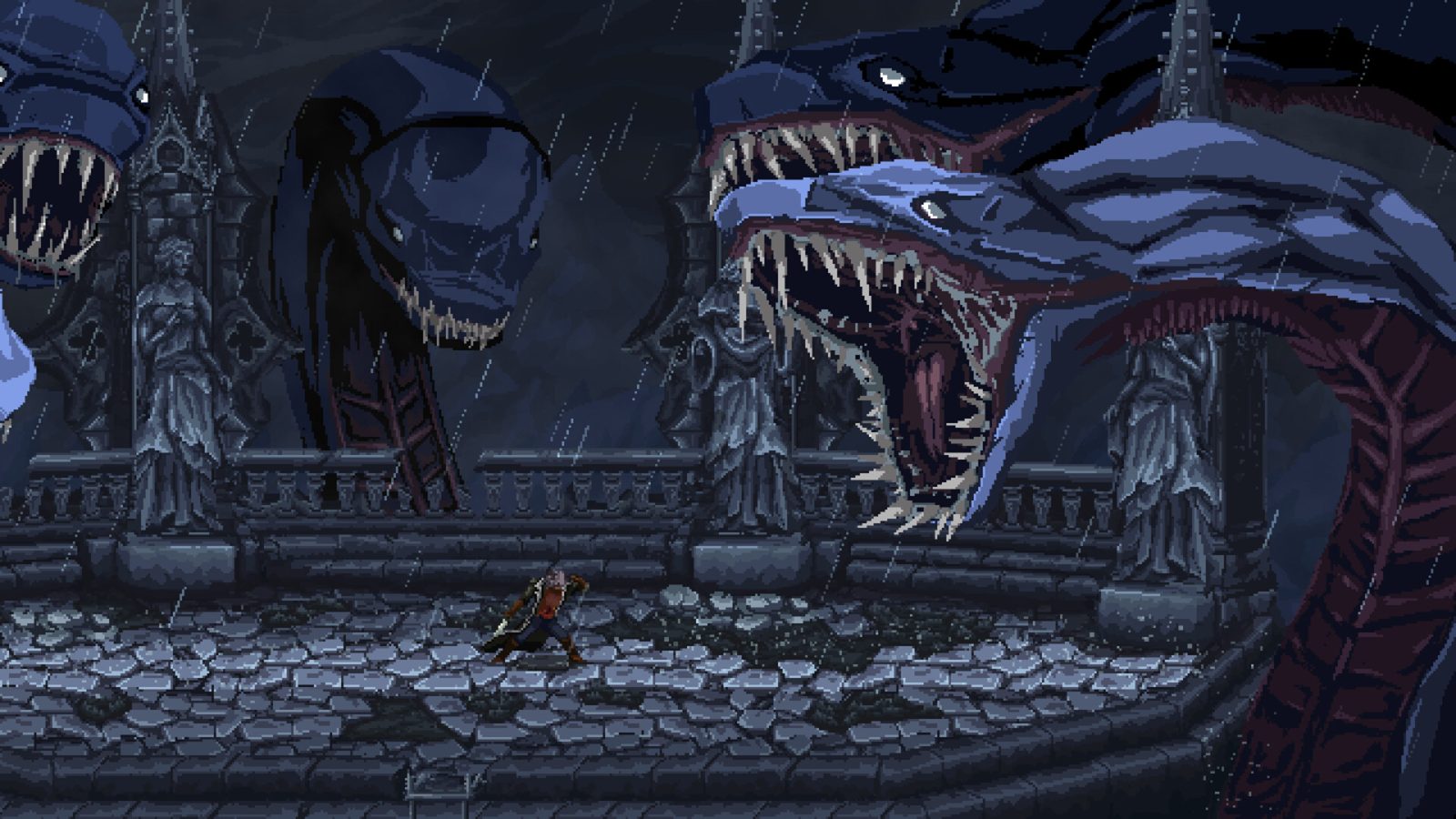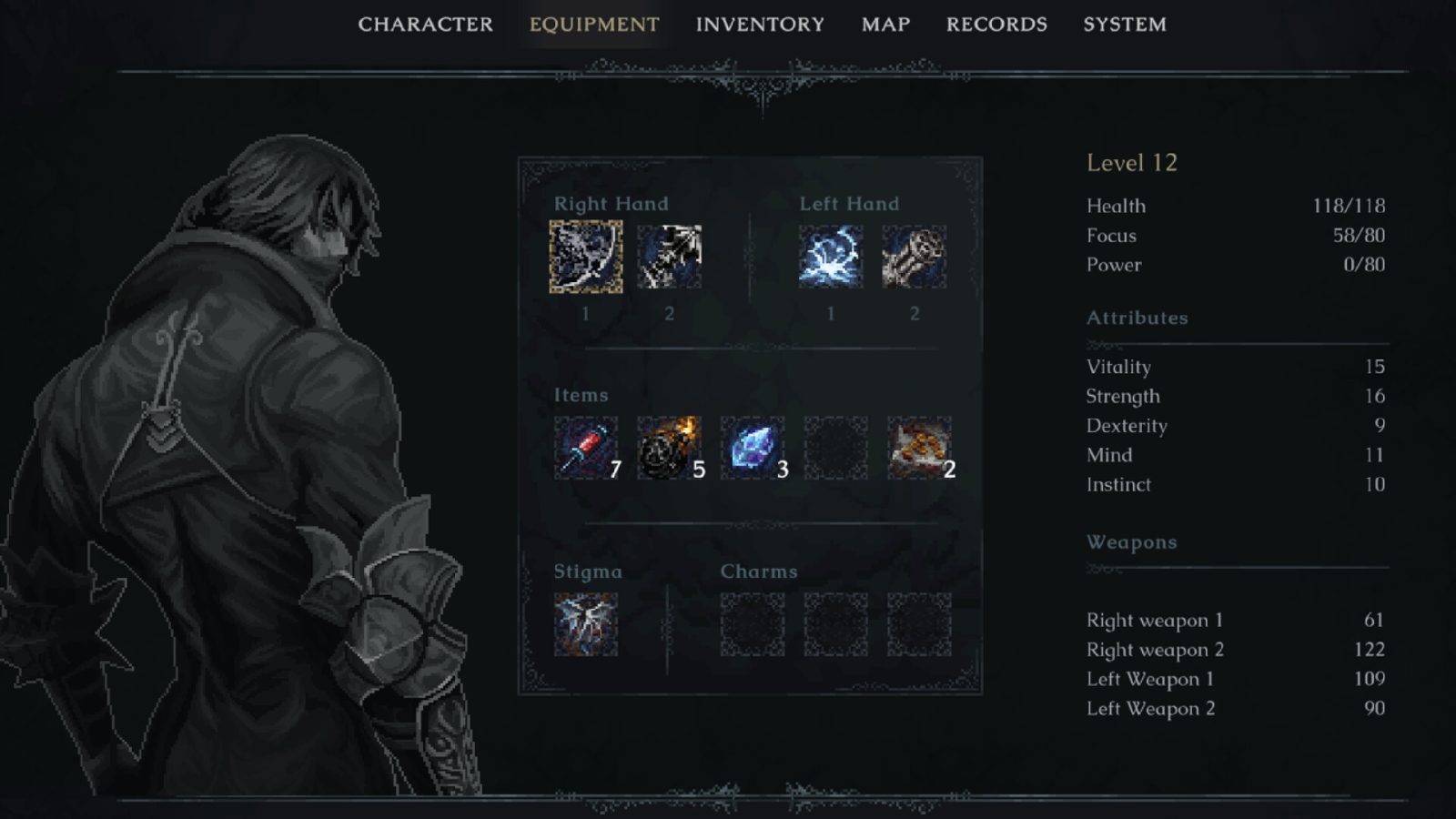
I’m one of those people who was originally ecstatic about the release of The Last Faith since its announcement on Kickstarter over 3 years ago. Indie Soulslike Metroidvanias are a dime a dozen but this one showed plenty of promise with its beautiful pixel art and visceral gameplay during teaser trailers. I had extremely high expectations of this game, almost too much I would say, but after playing through Kumi Souls Games’ debut project, I can’t help but feel disappointed in the unbalanced mess it ended up being.
You play as Eryk, an amnesiac swordsman, who sets off on a mission to recollect his past. The immediate vibes you get are either 2D Bloodborne or Blasphemous, as the game touches upon themes of religion and cosmic horror. The narrative is serviceable at best, and follows a familiar format of cryptic dialogue and item descriptions. But let’s be real here, no one is here for the story, and I’m sure if you’re one for a good read, you can piece together the overarching lore in due time.

The Last Faith is a perfect example of taking all the worst components of one’s inspirations and creating something worse than just copying word for word. First of all, the game allows you to choose between 1 of 4 starter “classes” when you start a new playthrough. I put classes in quotes because there’s absolutely no difference between them other than their initial stat distribution. For example, the Stargazer Mage class still starts with the same Dexterity-scaling starter sword. You get no magic scaling weapon, or any starter spells. It’s almost as if the developers were disingenuous, hoping to give you the illusion of choice.
Two words perfectly encapsulate the overall combat in this game: uninspired and clunky. It’s about what you would expect: a dodge, light attack, and off-hand attack that expends mana. Almost every action you take suffers from a small amount of input delay. Combine that with incorrectly designed hit boxes and wonky i-frames and you have yourself a combat system that is more frustrating than fun. You can crouch, but you can’t perform any attacks while crouching. There’s a ton of flying enemies, but there are no vertical attacks to reach them. You also can’t hit stun any enemies yet a single enemy’s attack will stunlock you out of your attack animation. There’s a parry mechanic, but it requires two button presses, which is just baffling. It’s also weird to put in a charged attack even though it’s virtually useless.

This game almost tries too hard to be hard, and thinks that doing just that is what makes a FromSoftware game brilliant. It doesn’t help that virtually every single enemy in the game, even the trash mobs, have bloated health pools, whereas you die in just a few hits, in addition to all the negative status effects lasting a lifetime. When you get electrocuted, become frozen, or start burning, you might as well go walk the dog or cook a meal, because it takes that long for the effect to expire. I could go on and on about more poor and questionable design decisions, but my conclusion is that the developers just wanted to make the game extremely difficult for the sake of being difficult, without any balance and fairness in mind.
Platforming is the other major gameplay element at play here, and it’s just as abysmal as the combat. You must jump to the ledge of a platform to cling onto it, even if visually and physically you can make the full jump to a platform from elsewhere. Why the developers designed it like this is beyond me. Furthermore, there’s no coyote time to let you jump a few frames after you jump off a ledge, so you’re going to have to do a guess and check jump test at the last moment to see if you can make it. Given the Metroidvania nature of the title, there are abilities you obtain naturally as you progress, such a double jump and grappling hook, that allow you to visit previously unreachable areas. Nothing new here.

The progression system here is a stripped down version of what you can expect in a Souls game, with attributes such as vitality, strength, and dexterity to dump your hard earned souls in to level up. You can purchase many main hand weapons, offhand firearms, or spells or find them via exploration. There’s actually quite a refreshing variety of different scaling weapons and spells to experiment with. But everything else is quite standard here, and the game doesn’t do anything to differentiate itself from its inspirations.
It’s important to note that this game takes the most annoying part about Bloodborne and makes it even worse. You see, the game adopts the consumable healing potion mechanic instead of the refillable Estus flask system from the Souls games, so you’re going to have to farm for potions if you run out. The drop rates for these are incredibly low, and you for sure won’t be able to fill up all 7 slots from hours of gameplay unless you purchase them from a shop. This is on top of how stingy the currency drop rates are and how extremely expensive shop items and upgrades are.
The game’s immaculate art direction and atmosphere is what carries it, despite its weak mechanics and poor design choices. The visuals perfectly capture the dark and gothic vibes of Bloodborne while putting a Castlevania twist on it as well. You’ll venture through boggy swamps, derelict crypts, and creepy castles, all the while confronting demented creatures and intimidating bosses. It was a pleasant surprise to see all the dialogue excellently voice acted as well, but the background music does get annoyingly repetitive after a while.

When it comes to technical performance, The Last Faith plays mostly well on the PlayStation 5, despite a few shortcomings. Overall load times are decently fast and the frame rates are generally smooth. This is to be expected considering the indie nature of the game, as the pixel art is not too demanding on hardware. Unfortunately I ran into several soft lock bugs in boss arenas where I had to relaunch the game to get myself unstuck. There was also a constant jittery audio noise when loading between areas that was jarring to say the least. Though not a major issue, I also found the playtime timer to be glitched, clocking in extra time than I had actually put in.
It’s a shame that there’s virtually no accessibility options whatsoever aside from changing the text language. Many tutorials and UI elements are omitted during your beginning moments of the game, so you’ll have to guess and check button inputs. It took me an embarrassingly long time just to figure out how to heal because the game doesn’t tell you how. A button control scheme is provided but there is no way for you to rebind controls. The settings menu is pretty barebones aside from very generic options such as tweaking audio levels and toggling “show damage numbers.” Oh, and you can’t pause the game either!
The Last Faith
Mediocre
Despite its incredible art direction and pixelated visuals, The Last Faith fails to encapsulate what makes its inspirations so brilliant. The plethora of poor and frustrating game mechanics and design choices, combined with technical performance issues and lack of accessibility options, makes this one of my biggest gaming disappointments of the year.
Pros
- Beautiful art direction
- Great diversity of weapons
- Rewarding exploration
Cons
- Artificial difficulty
- Clunky combat
- Stiff movement during platforming
- Technical bugs
